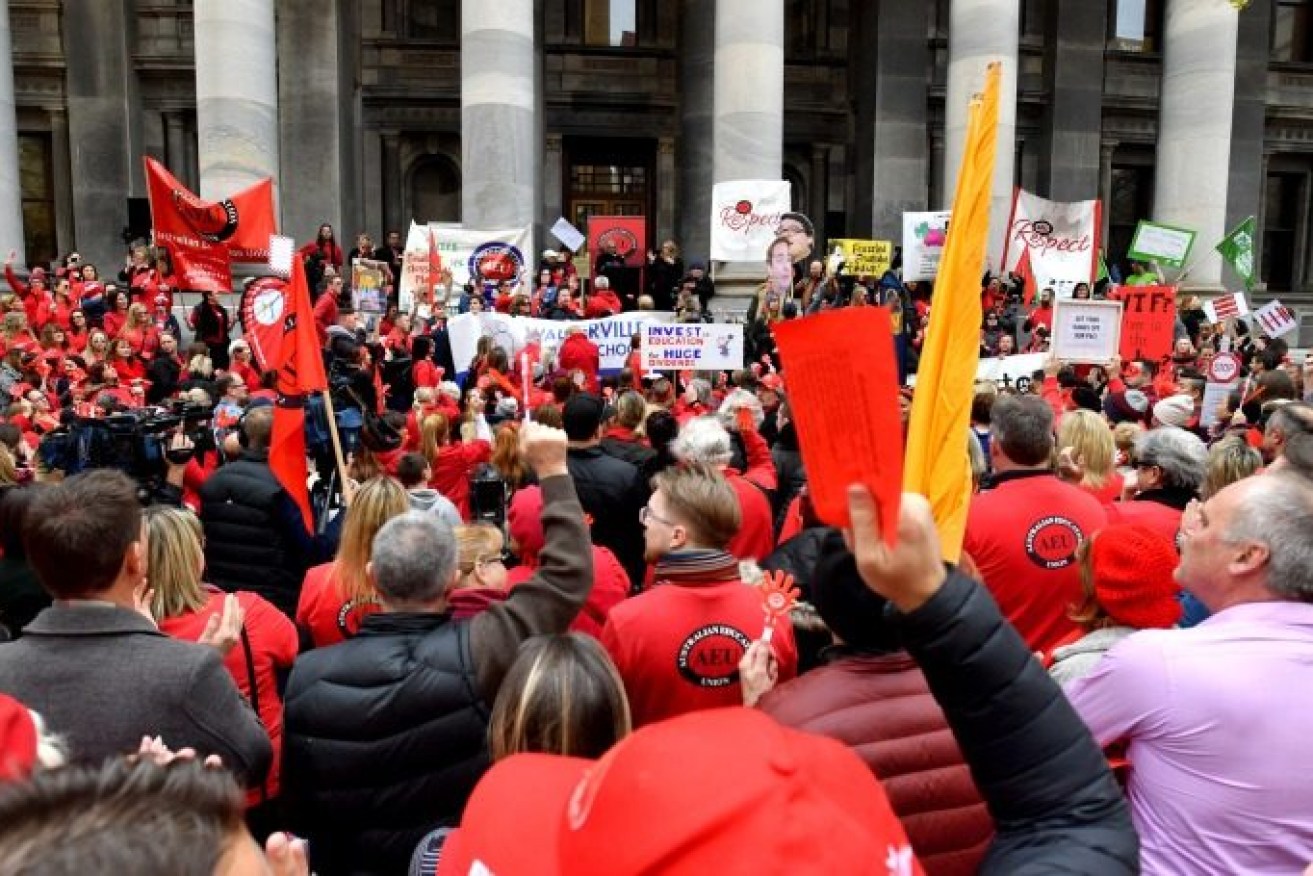SA union membership on downward trajectory
South Australia has recorded the second-biggest decline in trade union membership over the last six years – but the state’s peak union body says it’s confident the trend will soon reverse.


An Australian Education Union rally on the steps of state parliament in 2019. Photo: Sam Wundke/AAP
Australian Bureau of Statistics (ABS) data published on Wednesday shows the percentage of South Australian employees in a union dropped from 17.1 per cent in 2016 to 13 per cent in 2022.
The 4.1 percentage point drop is the second-biggest fall in membership across Australia, only behind New South Wales which fell from 16.6 per cent to 11.7 per cent.
The ABS data, published every two years and correct as of August 2022, shows South Australia’s union membership is still slightly above the national average of 12.5 per cent (roughly 1.4 million people).
The figures also outline the precipitous decline in both national and state-level trade union membership since the 1980s.
In 1988, union membership was at 43.1 per cent nationwide, including 47.4 per cent of all full-time employees.
In 1996, the ABS recorded South Australian union membership at 35 per cent of the workforce – the second-highest percentage in the nation.
Dale Beasley, secretary of SA Unions, the state’s peak trade union body, said the 2022 data shows “the decline in union membership is certainly slowing over time”.
“The most significant drops in union membership were during the big periods of industrial change from the ’80s through to the early 2000s,” he said.
“And what we are seeing now is the emergence of the health and professional services and education sectors … as the strongest areas of not only in union growth but they’re also developing into the largest areas of our economy.
“We know that union growth is high in the growing sectors of our economy, and we can tell from research that the opinion of people towards the role of unions in the country is extraordinarily high.”
According to the ABS data, South Australia’s workforce is still the third-most unionised in the country behind Tasmania (20.4 per cent) and Queensland (13.8 per cent).
The number of people in the state who are union members in their main job (part-time or full-time) is around 95,400, compared to roughly 114,700 in 2016 and 148,000 in 2005.
SA Unions also highlighted other points in the ABS data, including a comparison of median weekly earnings for union and non-union members.
The data showed union members earnt on average $1520 a week compared to $1208 for non-union members.
Beasley said he was “very confident” there would be a “resurgence” in membership over the coming years.
He said the COVID-19 pandemic increased awareness about the role of unions in the workplace.
“I think we’re very confident that we are going to see a resurgence in union membership because the understanding amongst people of the role of unions in society has been improving,” Beasley said.
“That’s been driven in a large part by COVID … [We] all had to start making decisions about what was in the best collective interests of the community, and that links quite strongly with the purpose of unions – that we exist to advance the rights of all workers.
“Together with the fact that we’ve seen so many, so many workplace issues like wage stagnation go unaddressed for so long. People understand that the time for change in workplaces is now.
“I would definitely say with a lot of confidence that you can count on seeing union membership grow in the coming term.”




